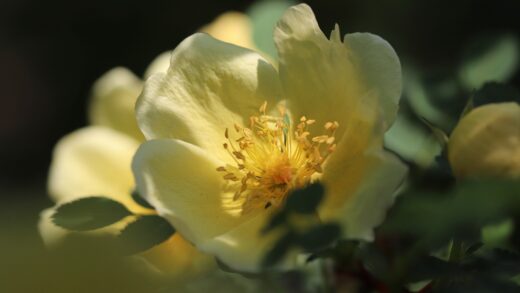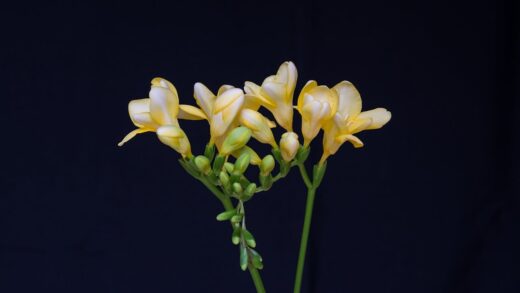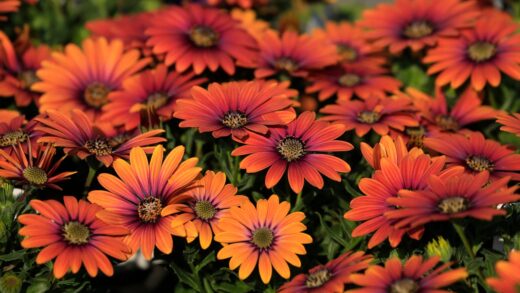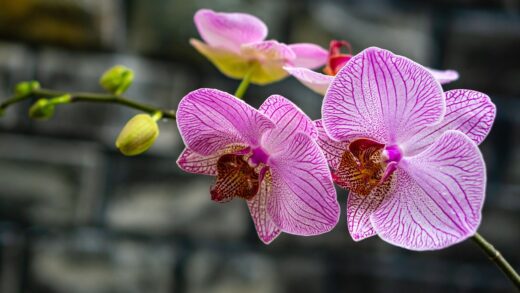Understanding the specific water needs of Geum coccineum is fundamental to cultivating a plant that is not only healthy and vibrant but also resilient. This charming perennial thrives in conditions that mimic its native habitat, which typically involves consistently moist but well-drained soil. Proper irrigation practices are therefore not simply about providing water, but about delivering it in a way that supports optimal root function, nutrient uptake, and overall plant vigour. Mastering the art of watering scarlet avens means finding the delicate balance between sufficient hydration and the prevention of waterlogged conditions that can be detrimental to the plant’s health.
The core principle of watering scarlet avens effectively is to aim for deep, infrequent soakings rather than shallow, frequent sprinklings. Deep watering encourages the plant to develop a strong, extensive root system that can search for moisture deeper in the soil profile. This makes the plant more self-sufficient and drought-tolerant over time. When you do water, apply it slowly and thoroughly at the base of the plant, allowing it to penetrate deep into the root zone. This method ensures the entire root system is hydrated, rather than just the soil surface.
The frequency of watering will depend on a variety of factors, including your specific soil type, the prevailing weather conditions, and the maturity of the plant. Sandy soils drain quickly and will require more frequent irrigation than heavy clay soils, which retain moisture for longer. During hot, dry, or windy weather, water will evaporate more quickly, necessitating an increase in watering frequency. Conversely, during cool, overcast periods, you will need to water less often. Always check the soil moisture before watering again to avoid over-saturating the ground.
The best time of day to irrigate your plants is in the early morning. Watering at this time allows the plant to absorb the moisture it needs to face the heat and stress of the day. It also ensures that any water that splashes onto the foliage has ample time to evaporate in the sunlight, which significantly reduces the risk of fungal diseases like powdery mildew that thrive in damp conditions. Watering in the evening is a less desirable alternative, as the foliage may remain wet overnight, creating an ideal environment for pathogens to proliferate.
The role of soil in moisture retention
The type of soil in your garden plays a pivotal role in how water is stored and made available to the roots of your scarlet avens. Ideal soil for this plant is a loamy, humus-rich medium that acts like a sponge, holding onto moisture while still allowing excess water to drain away freely. Heavy clay soils, while rich in nutrients, can become compacted and waterlogged, starving roots of oxygen. Conversely, very sandy soils have large particles and allow water to drain through too quickly, often before the plant has a chance to absorb what it needs.
Improving your soil’s structure is one of the most effective long-term strategies for managing water for your plants. The regular addition of organic matter is the key to achieving this improvement, regardless of your starting soil type. Incorporating materials like garden compost, well-rotted manure, or leaf mould adds humus to the soil. In clay soils, this organic matter helps to bind small particles into larger aggregates, creating better drainage and aeration. In sandy soils, it helps to fill the large pore spaces, increasing the soil’s capacity to hold water and nutrients.
Mulching is another essential practice that directly impacts soil moisture levels. Applying a 5-7 centimeter layer of organic mulch, such as shredded bark, wood chips, or straw, over the soil surface around your plants has multiple benefits. The mulch layer acts as a physical barrier that reduces the rate of water evaporation from the soil caused by sun and wind. It also helps to moderate soil temperature, keeping the root zone cooler in the summer, which further reduces water stress on the plant. As the organic mulch decomposes, it will continue to improve the soil structure.
Ultimately, a healthy, well-structured soil ecosystem reduces your reliance on supplemental irrigation. Soil rich in organic matter supports a thriving community of microorganisms, earthworms, and fungi, all of which contribute to creating and maintaining a porous, absorbent soil structure. This living soil can capture and store rainfall more effectively, making it available to your plants for longer periods. By focusing on building healthy soil, you create a more resilient and water-wise garden environment for your scarlet avens.
Recognizing signs of water stress
Being able to identify the signs of both underwatering and overwatering is a crucial skill for any gardener. An underwatered Geum coccineum will often show visible signs of distress quite clearly. The most common symptom is wilting, where the leaves and stems lose their turgidity and begin to droop. You may also notice that the leaves, particularly the lower ones, start to turn yellow or brown and may become crispy at the edges. If left unaddressed, the plant’s growth will be stunted, and its ability to produce flowers will be severely diminished.
Conversely, the signs of overwatering can sometimes be more subtle and are often confused with underwatering. A plant suffering from waterlogged soil will also wilt, but its leaves may appear limp and yellow rather than dry and crispy. This is because the excess water in the soil displaces oxygen, effectively suffocating the roots and preventing them from absorbing water and nutrients, leading to a wilting response. You might also notice a general lack of vigour, slowed growth, and the premature dropping of leaves.
To accurately diagnose the problem, the best course of action is to check the soil itself. Dig down a few centimeters with your finger or a trowel near the base of the plant. If the soil is dry and crumbly, the plant is clearly in need of water. However, if the soil is soggy, saturated, or has a sour smell, overwatering is the culprit. This direct assessment of soil moisture is the most reliable way to determine the correct course of action and prevent misdiagnosis based on foliage symptoms alone.
Once you have identified the issue, corrective measures can be taken. For an underwatered plant, the solution is straightforward: provide a deep, thorough watering immediately. For an overwatered plant, the remedy is to withhold water until the top several centimeters of soil have had a chance to dry out completely. In severe cases of waterlogging, especially in heavy clay soil, it may be necessary to carefully lift the plant, amend the planting hole with grit and compost to improve drainage, and then replant it.
Watering during different life stages
The water requirements of scarlet avens change throughout its life cycle, and adapting your irrigation practices accordingly is essential for its health. Newly planted specimens, whether they are young plants from a nursery or freshly made divisions, are particularly vulnerable to drying out. Their root systems are not yet established and are limited to a small area, so they rely entirely on the moisture available in their immediate vicinity. During this establishment phase, which can last several weeks, it is critical to keep the soil consistently moist to encourage new root growth.
Once the plant is well-established, typically after its first full growing season, its water needs become more moderate. A mature scarlet avens with a deep and extensive root system is more resilient and can access moisture from a larger volume of soil. During the active growing season in spring and early summer, when the plant is producing lush foliage and an abundance of flowers, it will require regular watering to support this vigorous growth. However, you can allow the top few centimeters of soil to dry out between waterings.
During its flowering period, maintaining adequate moisture is crucial for prolonging the bloom display. Water stress at this time can cause the flowers to fade prematurely and can inhibit the development of new buds. Consistent watering ensures the plant has the resources it needs to sustain its beautiful floral show. After the main flush of flowers has finished, you can typically reduce the frequency of watering slightly, unless you are experiencing a period of extreme heat or drought.
As autumn approaches and the weather cools, the plant’s growth slows down as it prepares for winter dormancy. Its water requirements will naturally decrease during this time. It is important to gradually reduce supplemental irrigation in the autumn to prevent the soil from becoming overly wet heading into winter. Soggy winter soil can promote crown and root rot, which is one of the biggest threats to the survival of dormant perennials. The goal is to allow the soil to be slightly on the drier side, but not completely bone dry.
Irrigation methods and tools
The method you choose for watering your scarlet avens can have a significant impact on both water efficiency and plant health. The most recommended method is using a soaker hose or a drip irrigation system. These systems deliver water slowly and directly to the soil at the base of the plant, minimizing water loss through evaporation and ensuring that the foliage remains dry. This targeted approach is highly efficient and is the best way to prevent the spread of fungal diseases that are encouraged by wet leaves.
If you are watering by hand, using a watering can with a rose attachment or a hose with a gentle spray nozzle is preferable. The key is to apply the water directly to the soil around the plant’s root zone, rather than spraying it over the top of the foliage. Take your time to allow the water to soak in deeply, moving the nozzle around the entire base of the plant. This simulates a gentle, soaking rain and is far more effective than a quick, powerful blast from an open hose, which can cause soil erosion and runoff.
Overhead sprinklers are generally the least desirable method for watering perennials like Geum coccineum. While they can be convenient for large areas, they are inefficient, with a significant amount of water being lost to evaporation before it even reaches the ground. More importantly, they wet the foliage indiscriminately, which, as previously mentioned, creates the perfect conditions for the development and spread of foliar diseases. If sprinklers are your only option, be sure to run them in the early morning so that the leaves have the entire day to dry out.
Regardless of the tools you use, the fundamental goal remains the same: to provide adequate moisture to the root zone while keeping the foliage as dry as possible. Investing in a good quality watering wand can make hand-watering more precise and enjoyable. Similarly, setting up a simple drip irrigation system on a timer can automate the process, providing consistent and efficient watering with minimal effort. Choosing the right tool for your situation will make a significant difference in the health of your plants and the sustainability of your garden.

















